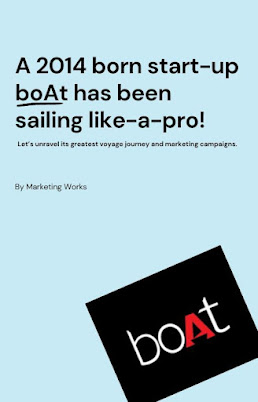As all of us know that, Pepsi Co is the second biggest player in the global food and beverage industry. Hence we are going to see what is Pepsi co.'s Grand strategies how does it provides maximum satisfaction to its customers and the value it provides to it's customers.
Let's start.....
Mission statement of Pepsi co.:
"CREATE MORE SMILES WITH EVERY SIP AND EVERY BITE!!"
About PepsiCo:
PepsiCo is the second biggest player in the global food and beverage industry. The company offers a diverse array of products. PepsiCo’s generic competitive strategy is based on the need to address market pressure coming from its biggest rivals, including the Coca-Cola Company. A firm’s generic strategy (based on Porter’s model) defines the basic strategy used to maintain competitive advantage. On the other hand, PepsiCo’s intensive growth strategies are a response to the evolving global food and beverage market conditions. Intensive growth strategies outline how firms support their growth. PepsiCo’s generic strategy for competitive advantage matches its intensive strategy to ensure long-term growth.
PepsiCo’s intensive growth strategies enable the company to effectively use its generic strategy to maintain strong competitive advantage. PepsiCo’s success is an indicator of the appropriateness of these strategic directions, especially how the generic strategy supports competitiveness.
PepsiCo’s Generic Strategy (Porter’s Model)
PepsiCo applies different generic competitive strategies, considering the company’s wide array of products. However, the main generic strategies that contribute to PepsiCo’s competitive advantage are as follows:
- Cost leadership
- Broad differentiation
PepsiCo uses cost leadership as its primary generic competitive strategy. This generic strategy focuses on cost minimization as a way to improve Pepsi Co’s financial performance and overall competitiveness.
For example, to compete against Coca-Cola products, Pepsi Co offers low prices based on low operating costs. The company also sometimes has special promotional offers with discounted prices.
On the other hand, Pepsi Co uses broad differentiation as its secondary generic competitive strategy. This generic strategy enables business competitive advantage by attracting consumers to some unique features of the firm’s products.
For example, Pepsi Co’s Lay’s potato chips are marketed as a healthful snack product because of reduced saturated fat content. A strategic objective for the cost leadership generic strategy is to automate production processes to minimize Pepsi Co’s operating costs.
In relation, Pepsi Co’s strategic objective for the broad differentiation generic strategy is to innovate products to address concerns about their health effects.
PepsiCo’s Intensive Strategies (Intensive Growth Strategies)
- Market Penetration.
PepsiCo implements market penetration as its primary intensive growth strategy. This intensive strategy supports business growth through increased sales, such as from a bigger market share.
For example, PepsiCo uses aggressive marketing to attract more consumers. A strategic objective linked to this intensive growth strategy is to minimize costs and prices to attract more consumers despite market saturation.
As such, Pepsi Co’s generic competitive strategy of cost leadership supports this intensive strategy for growth.
- Product Development.
PepsiCo’s secondary intensive growth strategy is product development. This intensive strategy requires offering new products to capture more consumers.
For example, PepsiCo continues to develop products or variants of existing ones, such as low-calorie, reduced-salt, or low-saturated-fat variants of its food and beverage products.
A strategic objective linked to this intensive growth strategy is to boost R&D investments for product innovation. PepsiCo’s generic competitive strategy of broad differentiation supports this intensive strategy by offering unique or novel products to attract more consumers and grow the business.
- Market Development.
PepsiCo applies market development as its supporting intensive growth strategy. This intensive strategy supports business growth by capturing new markets or market segments.
For example, PepsiCo continues to expand its distribution network to reach the last remaining markets or segments, especially in developing regions. However, market development is only a supporting intensive growth strategy because PepsiCo already has significant presence in all regional markets worldwide.
A strategic objective for this intensive strategy is to expand PepsiCo’s supply chain to support the growth of its distribution network. The cost leadership generic competitive strategy enables PepsiCo to effectively use this intensive growth strategy through cost minimization despite additional investments used for expansion to new markets or market segments.











0 Comments